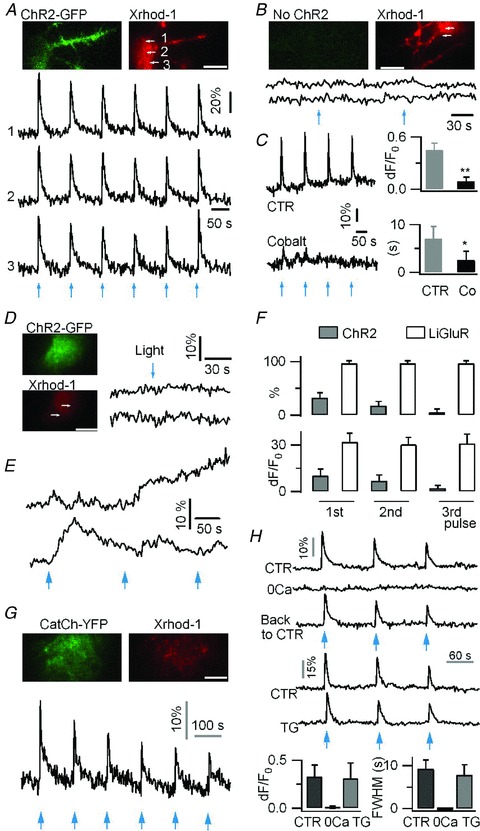Figure 2. Ca2+ signalling in astrocytes evoked by photoactivation of the mutant channelrhodopsin ChR2(H134R) and the Ca2+-permeable channelrhodopsin CatCh.

A, in a neuron expressing ChR2(H134R)-GFP and loaded with the red Ca2+ indicator Xrhod-1, 458 nm EPI pulses (27.3 mW mm−2, 500 ms) evoked reproducible Ca2+ rises (ΔF/F0= 46.0 ± 13.2%, n = 9 cells). B, absence of light-evoked Ca2+ increases in neurons not expressing ChR2 (ΔF/F0= 1.3 ± 6%, n = 4 cells). C, neuronal ChR2-evoked Ca2+ rises were inhibited by the non-selective voltage-gated Ca2+ channel (VGCC) blocker, cobalt (Co, 1 mm, ΔF/F0= 9.2 ± 4.7%, FWHM = 2.5 ± 1.9 s; vs. control ΔF/F0= 45.4 ± 8.3%, P < 0.01, FWHM = 7.0 ± 2.6 s, P < 0.05, n = 8 trials from 4 cells per condition). D, in astrocytes, short photoactivation (458 nm, 27.3 mW mm-2, 500 ms) of ChR2 did not evoke any near-membrane Ca2+ elevation. E, example Ca2+ responses evoked by longer light pulse (458 nm, 1 s) in ChR2-expressing astrocytes. F, percentage of astrocytes showing light-gated Ca2+ rises, and Ca2+ response amplitude in LiGluR-expressing (60/63 cells) and ChR2-expressing (19/60 cells) astrocytes. The comparison was made using three successive light pulses (385 nm, 100 ms for LiGluR; 458 nm, 1 s for ChR2) applied every 150 s. G, in astrocytes, the photoactivation (1 s, 458 nm) of CatCh evokes fast Ca2+ rises which fade upon repetitive photoactivation. H, CatCh-evoked Ca2+ elevations in astrocytes were absent in 0 mm Ca2+ extracellular solution (0 Ca, solution change was achieved in less than 30 s), and were unaffected by depleting the endoplasmic reticulum Ca2+ store by thapsigargin (TG, 2 μm, 20 min). Recordings were done on the same cells in different conditions. CatCh photoactivation, 2 s 458 nm (CTR, 15 trials, 5 cells; 0 Ca, 6 trials, 3 cells; TG, 18 trials, 6 cells). Bars, 10 μm.
